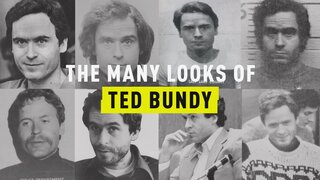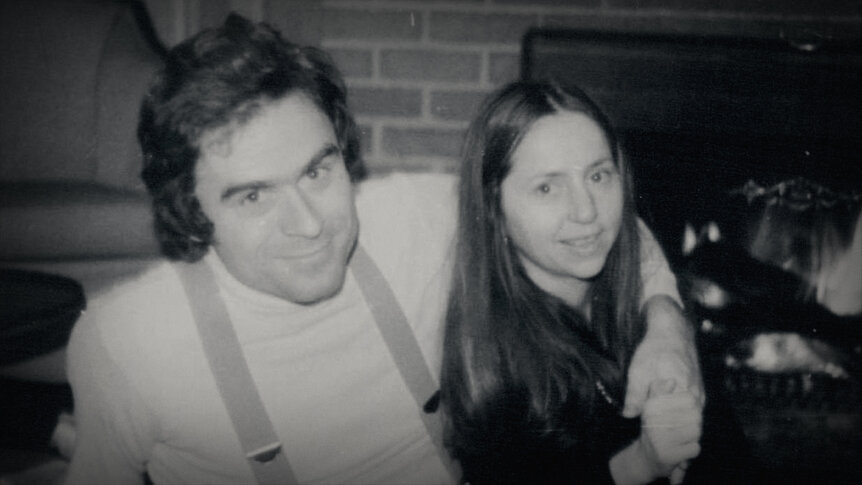Create a free profile to get unlimited access to exclusive videos, breaking news, sweepstakes, and more!
'I'm Concerned About My Boyfriend:' Who Is Elizabeth Kloepfer And How Long Did She Date Ted Bundy?
At some point, Elizabeth Kloepfer began to suspect that her boyfriend, Ted Bundy, was cheating on her — but then she also started to worry that he was a serial killer.

Serial killer Ted Bundy was often referred to as “Lady Killer" — mostly because of the fact that he admitted to killing over 30 women — but it was also applied to him in the more colloquial sense as his supposed charm and good looks allegedly made him a hit with women.
It was this charm that first attracted his long time girlfriend Elizabeth Kloepfer, who would eventually turn him into police as a possible suspect in the murders.
Lily Collins takes on the role of Elizabeth Kloepfer in the new biopic "Extremely Wicked, Shockingly Evil and Vile," premiering Friday on Netflix. The story is told through Kloepfer's point of view as she slowly comes to the devastating realization that Bundy, played by Zac Efron, is responsible for the grisly murders.
Ann Rule described Kloepfer in her 1980 true crime novel “The Stranger Beside Me: The True Crime Story of Ted Bundy,” as a “central force in his life for the next seven years" in Bundy's life.
She and Bundy met at the Seattle-area bar Sandpiper Tavern on September 26, 1969. Kloepfer was hesitant at first but allowed Bundy to buy her a beer. She was fascinated by Bundy and his interest in psychology.
She gave him her number but didn’t expect that he would call. Unfortunately for Kloepfer, he did.
Who was she?
A few years older than Bundy, Kloepfer was the daughter of a prominent Utah doctor. She was a young divorcee with a 3-year-old daughter. Her husband was a convicted felon, which she apparently only found out after they married, and after the divorce Kloepfer moved to Seattle for a new life. She likely didn't expect she would move on from convicted felon to serial killer.
Rule described her in her book as a “diminutive woman with long brown hair — not pretty, but with a winsomeness that made her seem years younger than she was.” Rule, who was friends with Bundy before she knew him as a serial killer, also described her as appearing to be “vulnerable” and “shy.”
She worked as a secretary at a college in the city and only knew her coworkers, one childhood friend from her years in Utah, and now, Bundy.
Her relationship with Bundy
The two began dating, and as Rule explained, Kloepfer “fell in love with him" — and maybe he fell in love with her money. She often loaned him cash to help with his schooling.
In the Netflix docuseries, “Conversations with A Killer: The Ted Bundy Tapes,” that included never before heard death row interviews with Bundy by journalists Stephen Michaud and Hugh Aynesworth, Michaud described Kloepfer as Bundy’s “main squeeze.” He said they almost got married.
“Almost from the start, she wanted to marry him but understood when he told her that would have to be a long time in the future,” Rule wrote. “He had much to accomplish first.’
Bundy claimed to love her
“I loved her so much,” Bundy said, according to the newly released tapes. “It was destabilizing.”
He even gave her a rose every year on September 26, the anniversary of their meeting.
During their relationship, Bundy became a father figure for Kloepfer’s daughter. They went camping, rafting, and sailing together. However, they never shacked up.
Rule noted that he appeared devoted to her, at least sometimes.
The relationship wasn't perfect
However, Bundy noted that they didn’t have a lot in common, particularly their political affiliations. She liked reading. He didn’t. Bundy described her as coming from a wealthy Mormon family. He also characterized her as “meek.”
Bundy explained in the tapes that he wasn’t able to open up completely with Kloepfer.
“Don’t know what I was hiding,” he told the journalists in 1980. “Maybe I was just trying to preserve the Ted Bundy devil-may-care attractive bachelor image.”
He also admitted that he had envy issues.
“I was terribly jealous of her,” he said. “I used to agonize about losing her. I used to just torture myself.”
Meanwhile, Rule wrote that Kloepfer had her own insecurities with Bundy, and that she often sensed he saw other women.
She had other suspicions, too
Kloepfer suspected at times that it was her “family’s money and position that attracted Ted to her. She’d seen his appraising glance around their home in Utah when she took him home for Christmas in 1969,” Rule wrote.
But it was when police released a sketch of the man named “Ted” who was abducting women around Seattle that Kloepfer grew suspicious of something more serious.
She admitted that one of the composites looked just like her boyfriend but didn’t want to go to the police... at least, at first.
She called the cops on him
As noted in “Conversations with A Killer: The Ted Bundy Tapes,” she eventually called police and said, “I’m concerned about my boyfriend named Ted Bundy, whom you should look at.”
During a taped interview with police she said Bundy confided in her that he followed people late at night, including a sorority girl.
Bundy has been credited with killing several sorority girls.
Kloepfer also told police she found a bag of women’s underwear in his apartment and a bowl filled with house keys in addition to plaster of Paris and bandages, which was especially damning as Bundy was known for faking injuries using casts and bandages in an attempt to look less threatening and ask women for help before beating, abducting, and later killing them. She also found a knife in his car.
He called her from jail
After several brazen escapes from custody, Bundy fled to Florida in 1978 where he murdered multiple sorority girls. Then, he was once again arrested in Pensacola for a traffic stop after he was caught driving a stolen vehicle. While being interrogated by police he refused to identify himself, as he was on the 10 Most Wanted List at the time, until he made a deal: he would identify himself if he could make a phone call to Kloepfer. Bundy recalled to the journalists who interviewed him that he needed somebody to talk to.
Kloepfer described that phone call in the docu-series as a collect call in which "he repeated over and over again that this was really going to be bad when it broke." He was referring to the media coverage of himself.
"I asked him if he was referring to the murders to some sorority girls in Florida and he said he wouldn't talk about it," she said, adding that he told her he wished they could speak without anyone listening and that he could explain why he was the way he was. She asked him if he was sick and he in turn "told me to back off."
Another day, he called her collect again to tell her that he was in fact "sick" and that he was "consumed by something that he couldn't understand," something he couldn't "contain."
"He spent so much time trying to maintain a normal life and he just couldn't do it," she recalled, as documented in the docu-series. "He said that he was preoccupied with this force."
She wrote a book about Bundy
She authored a tell-all book entitled ”The Phantom Prince: My Life with Ted Bundy" under the pseudonym Elizabeth Kendall in 1981. The book is available for a few hundred dollars a piece on Amazon (and that goes for used copies, too).
Jill Sederstrom contributed to this report.



























